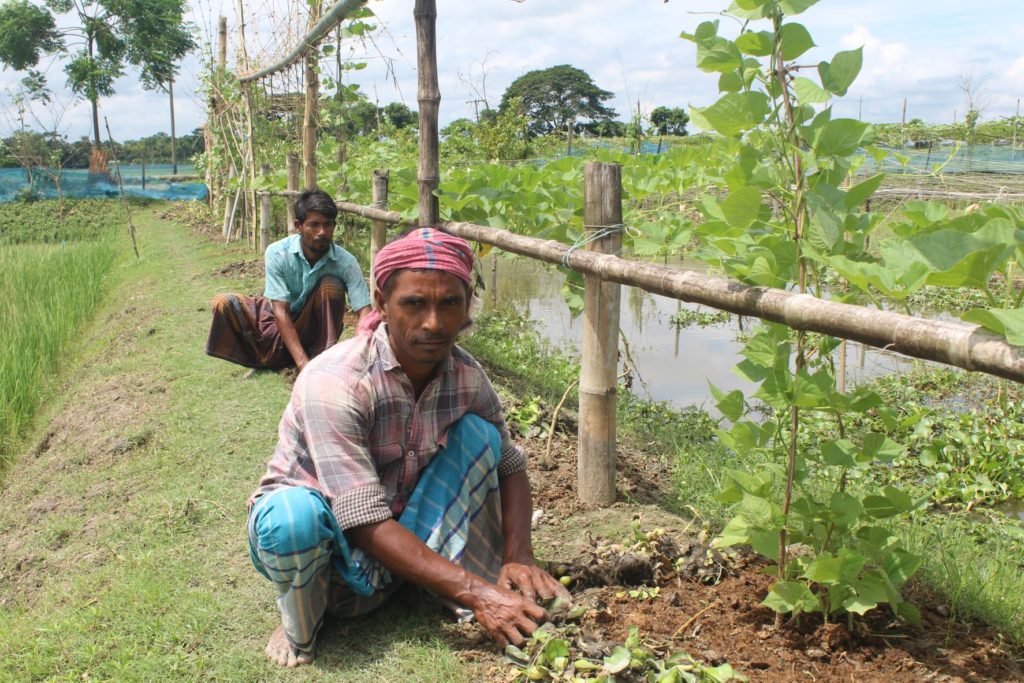
The Upside of Vegetable Production
Soon after joining a men’s Self-Help Group and a vegetable farming team, Kamrul was selected to participate in model-farmer training through local partner SATHI (Sustainable Association for Taking Human-Development Initiatives). He had hands-on practice in kitchen gardening, planting, preparing natural pesticides and using organic fertilizers via compost piles and worm composting. As soon as he could, he began using all of these techniques to cultivate vegetables on his own small farm, and convincing his neighbors to give kitchen gardening a try.
According to Kamrul, “There is no downside to vegetable production, because what you and your family don’t eat you can sell, and vice versa.”
The other farmers on his team joined Kamrul in taking out a small loan to lease some land by a fish pond and buy a few tools and seeds. The team selected Kamrul as convener and caretaker. They produced okra, red and green amaranth, bitter gourd, spinach, pumpkin, radishes, tomatoes and some local vegetables. Even when they deducted the cost of the lease, implements and seeds they made a profit after taking their produce to market. Now they are more motivated than ever. In fact, they’ve leased more land and have added cauliflower, cabbage, and beans to their lineup.
Through the vegetable farm, they are overcoming their own food shortages, improving their families’ nutritional intake, and earning a modest living. They envision further expanding their farm and increasing the availability and accessibility of vegetables locally. Other community members are encouraged by their achievements and are starting their own initiatives in vegetable gardening.
Bangladesh Kendua Program
Led by SATHI (Sustainable Association for Taking Human-Development Initiatives)
